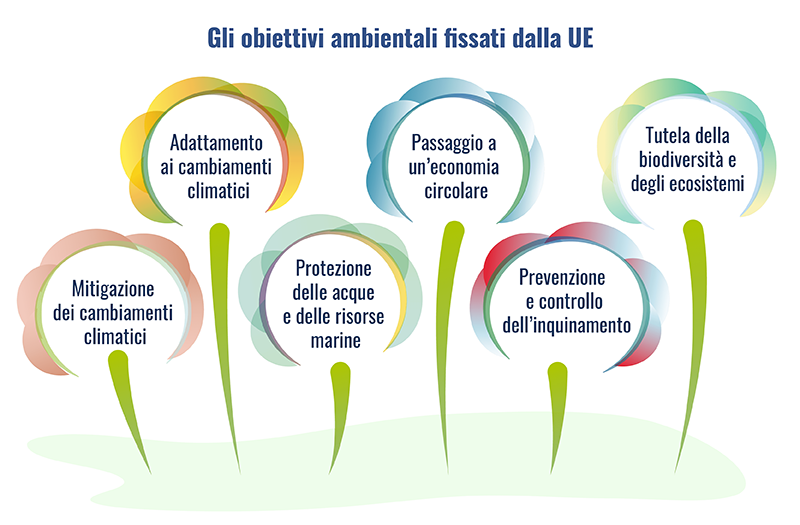The European Union's green taxonomy
To strengthen investors' confidence in sustainable finance, the European Union has introduced a 'green taxonomy' - a classification system that lists the economic activities considered to be 'environmentally sustainable'.
First of all, the Taxonomy Regulation identifies six environmental objectives:

Furthermore, the Taxonomy establishes that an economic activity is considered environmentally sustainable if it meets certain criteria:
- it makes a substantial contribution to one of the six environmental objectives;
- it does not cause significant harm to any of the other objectives (the Do No Significant Harm principle – DNSH);
- it respects minimum social safeguards, such as those described in the OECD Guidelines for Multinational Enterprises or in the conventions of the International Labour Organization (ILO), aimed at protecting human rights and workers' rights; and
- it complies with specific technical screening criteria for activities, as specified by the Commission through secondary legislation, known as delegated acts.
Based on these criteria, the European Union has published a comprehensive list of 'green' activities, which can also be found on the EU Taxonomy Compass webpage. This allows financial products aimed at financing these activities - such as the EU green bonds - to be considered 'environmentally sustainable'.





 Youtube
Youtube
 X - Banca d’Italia
X - Banca d’Italia
 Linkedin
Linkedin
 RSS
RSS